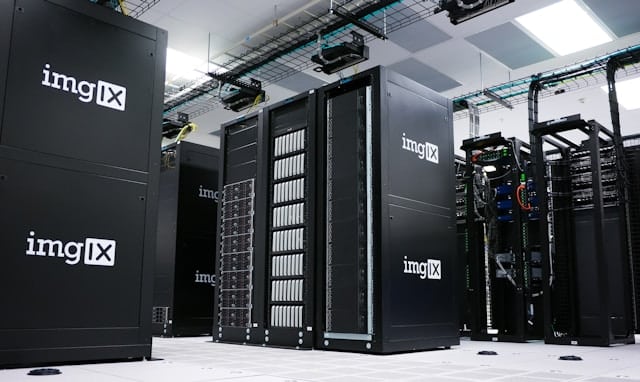The issue of sustainability has taken center stage in various sectors across the globe. With the increasing demand for internet services, more and more data centers have been set up to cater to this need. However, these centers consume massive amounts of energy, posing significant challenges to the quest for an environmentally sustainable future.
In the UK, data centers are a significant part of the energy consumption puzzle. They utilise vast amounts of power for their operations, including cooling, running servers, and maintaining the infrastructure. Implementing renewable energy in these centers is thus crucial to reducing carbon emissions and making the centers more sustainable.
Also to discover : How to Optimize Telematics for Fleet Management in UK Logistics Companies?
This article will explore the best practices for implementing renewable energy in UK data centers, considering aspects such as efficiency, cost, and the impact on the environment.
Switching to Renewable Power Sources
As data centers require a constant and reliable power supply, most of them rely on power from the national grid, which is primarily generated from non-renewable sources. This practice contributes to high carbon emissions and environmental degradation.
Also to discover : How Can UK Independent Publishers Use Analytics to Drive Content Strategy?
Switching to renewable power sources is a viable solution to this problem. The UK has a wealth of renewable energy resources, including wind, solar, and hydro power. These sources significantly reduce carbon footprints and are more sustainable in the long run.
Implementing renewable power in data centers involves working closely with renewable energy providers and installing the necessary infrastructure. This process might require a substantial upfront investment but would lead to significant savings in the long run due to the reduced energy costs.
Optimising Data Center Energy Efficiency
While switching to renewable energy sources is crucial, it’s equally important to ensure that the data centers are run as efficiently as possible. This practice involves optimising the energy consumption of the center, including its cooling systems, servers, and other infrastructure.
Efficiency can be improved in various ways. For instance, using energy-efficient servers and other hardware can significantly reduce energy consumption. Similarly, optimising cooling systems to prevent energy waste is another crucial area.
Additionally, implementing advanced efficiency measures like using AI to manage energy consumption can also lead to significant improvements. By analysing usage patterns, AI can optimise energy consumption and reduce wastage.
Green Building and Design for Data Centres
If you’re building a new data center, considering sustainability and energy efficiency in the design phase can have significant long-term benefits. Green building practices include using sustainable materials, designing the center to take advantage of natural light, and incorporating renewable energy infrastructure from the outset.
In existing centers, it’s possible to make modifications to improve energy efficiency and sustainability. For example, you can retrofit the building with energy-efficient windows to reduce the need for artificial lighting and cooling.
Moreover, incorporating renewable energy infrastructure, like solar panels or wind turbines, into the design of the center can reduce dependence on the grid and make the center more sustainable.
Investing in Carbon Offsetting
While implementing renewable energy and improving energy efficiency are crucial, they may not be enough to completely eliminate carbon emissions. In such cases, investing in carbon offsetting can help to further reduce the environmental impact of data centers.
Carbon offsetting involves investing in projects that reduce carbon emissions to compensate for the emissions produced by your activities. These projects could include reforestation, renewable energy projects, and others that contribute to reducing the overall carbon footprint.
Regulatory Compliance and Incentives
Implementing renewable energy in data centers is not only good for the environment, but it’s also often a requirement by law. The UK government has introduced several regulations aimed at reducing carbon emissions and promoting renewable energy.
Complying with these regulations is not only crucial for legal reasons but also because it can provide a variety of benefits. For instance, there are several incentives in place for companies that adopt renewable energy, including tax breaks and grants.
Furthermore, compliance with environmental regulations can enhance the reputation of your data center. In today’s world, where consumers are increasingly concerned about environmental issues, being known as a green and sustainable center can provide a competitive edge.
By implementing renewable energy in data centers, we can significantly reduce their environmental impact. This approach not only contributes to the fight against climate change, but it is also beneficial for the centers themselves. With the right strategies and compliance with regulations, the transition to renewable energy in data centers can be a win-win situation for all.
Utilising Green IT Equipment in Data Centres
One of the most effective ways of implementing renewable energy in data centres is to focus on utilising Green IT equipment. Green IT, as the name suggests, refers to environmentally friendly IT practices and technologies. Green IT equipment is designed to maximise energy efficiency and minimise carbon emissions, thus reducing the data centre’s environmental impact.
Green IT equipment can include energy-efficient servers, storage devices, networking equipment, and other hardware. These devices consume less power and produce less heat than traditional IT equipment. Additionally, such equipment often comes with built-in energy management features, which allow data centre operators to further improve their energy efficiency.
Moreover, utilising green IT equipment can lead to significant cost savings. Although the initial investment may be higher than traditional IT equipment, the lower energy costs can offset this over time.
For example, energy-efficient servers may cost more upfront, but they can significantly reduce the amount of electricity needed to run the data centre. Therefore, centre operators could achieve substantial savings in the long term.
Furthermore, the use of Green IT equipment can also enhance the reputation of a data centre as being eco-friendly. In an era where sustainability is increasingly important to consumers, this could provide a significant competitive advantage.
Adopting Sustainable Practices in Data Center Operations
Apart from investing in renewable energy and energy-efficient equipment, adopting sustainable practices in day-to-day operations is another effective strategy for reducing a data centre’s environmental impact.
One such practice is to implement a robust energy data monitoring system. By closely monitoring the energy consumption of different systems and processes in the data centre, operators can identify areas where energy is being wasted and take corrective action.
Moreover, proper management of cooling systems is also crucial. A considerable amount of energy in data centres goes into cooling the servers. Optimal temperature and humidity levels must be maintained to prevent hardware failures and to ensure the longevity of the equipment. Therefore, using energy-efficient cooling methods and regular maintenance of cooling systems can significantly reduce energy consumption.
Another sustainable practice is to reduce, reuse, and recycle wherever possible. For example, data centres can reduce their paper usage by moving to digital documentation, reuse old equipment instead of discarding it, and recycle e-waste responsibly.
Lastly, educating the staff about the importance of energy efficiency and sustainable practices can also contribute to making the data centre more eco-friendly. If all employees understand the importance of energy efficiency and are motivated to make a difference, the overall energy consumption of the data centre can be significantly reduced.
Conclusion
In conclusion, implementing renewable energy in UK data centres involves a multifaceted approach, combining the adoption of renewable energy sources, optimisation of energy efficiency, incorporation of Green IT equipment, and the implementation of sustainable practices in daily operations.
With the increasing emphasis on sustainability and the growing demand for data services, adopting these best practices is not only beneficial to the environment but also crucial for the long-term viability of the data centres.
Moreover, the transition toward renewable energy in data centres comes with several benefits. Not only does it offer long-term cost savings due to reduced energy costs, but it can also lead to tax breaks and grants from the government. Additionally, being known as an eco-friendly data centre can boost the reputation of the centre, giving it a competitive edge in the market.
Indeed, as we move forward, it is crucial for data centre operators to embrace these changes and work toward becoming more sustainable. By doing so, they can contribute to the UK’s efforts to reduce carbon emissions and combat climate change, while also ensuring their centres’ sustainability and competitiveness in a rapidly evolving digital landscape.






